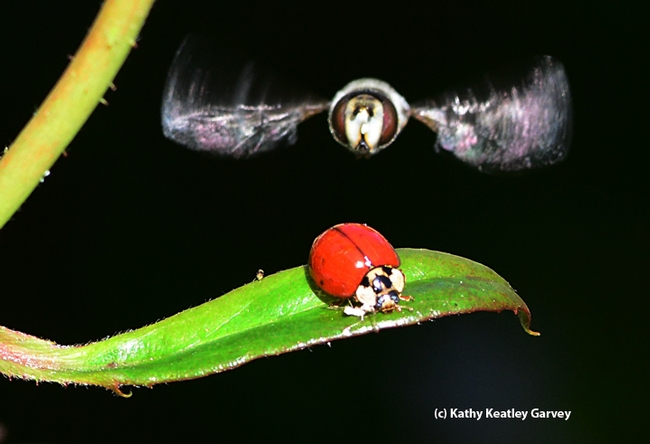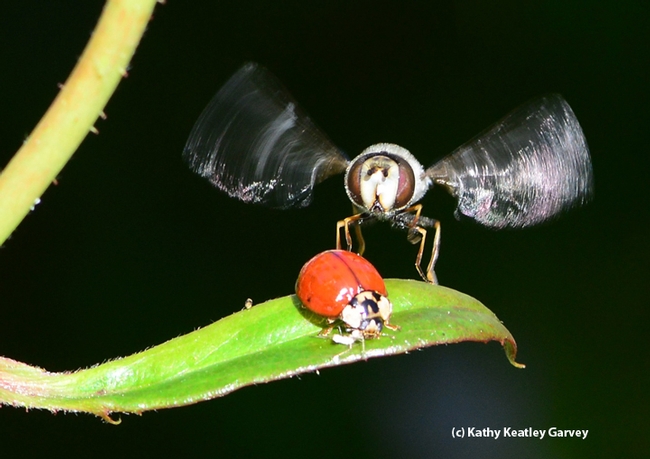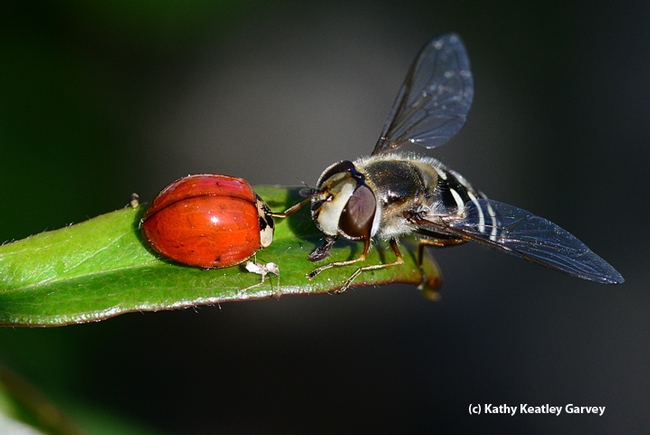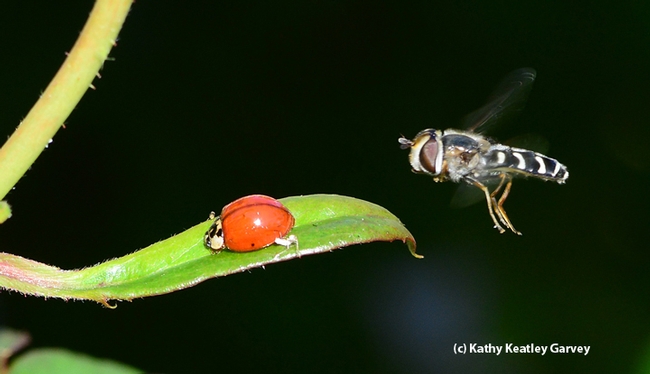So, here I am, an Asian lady beetle (Harmonia axyridis) perched on a rose bush in Vacaville, Calif., as dawn breaks. I'm eating aphids and minding my own beetle business, which consists of gobbling aphids and more aphids. And more aphids. Did I say more aphids? More aphids.
Wait, what's that? Something is heading straight toward me, its wings are flapping like crazy. Hey, I was here first. Go away!
Whoa, what are you doing? You've landed and you're licking me. What do you think I am, a honey stick?
That's what happened during a backyard encounter with an Asian lady beetle and a large syrphid fly. The fly, identified by senior insect biosystematist Martin Hauser of the Plant Pest Diagnostic Branch, California Department of Food and Agriculture, is a female Scaeva pyrastri.
Hauser and Lynn Kimsey, director of the Bohart Museum of Entomology and professor of entomology at UC Davis, agreed that the syrphid fly is "going after honeydew on the beetle's head." Honeydew is a sugary, sticky liquid that aphids secrete when they're feeding on plant juices.
"The beetle was full of honeydew from feasting on aphids," Hauser noted, "and that is what the fly was after."
Attached Images:

A large syrphid fly, Scaeva pyrastri (as identified by Martin Hauser of the California Department of Food and Agriculture), heads for a lady beetle. (Photo by Kathy Keatley Garvey)

Touchdown! The large syrphid fly, Scaeva pyrastri, lands next to the lady beetle.(Photo by Kathy Keatley Garvey)

The syrphid fly licks honeydew from the lady beetle. (Photo by Kathy Keatley Garvey)

Honeydew is a sugar-rich sticky liquid, secreted by aphids and some scale insects as they feed on plant sap. When their mouthpart penetrates the phloem, the sugary, high-pressure liquid is forced out of the anus of the aphid.